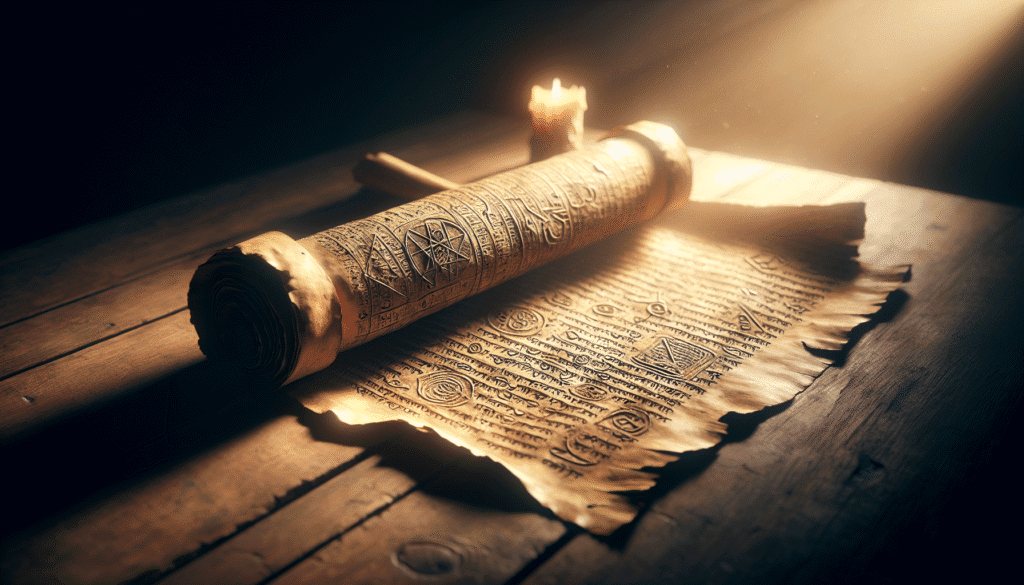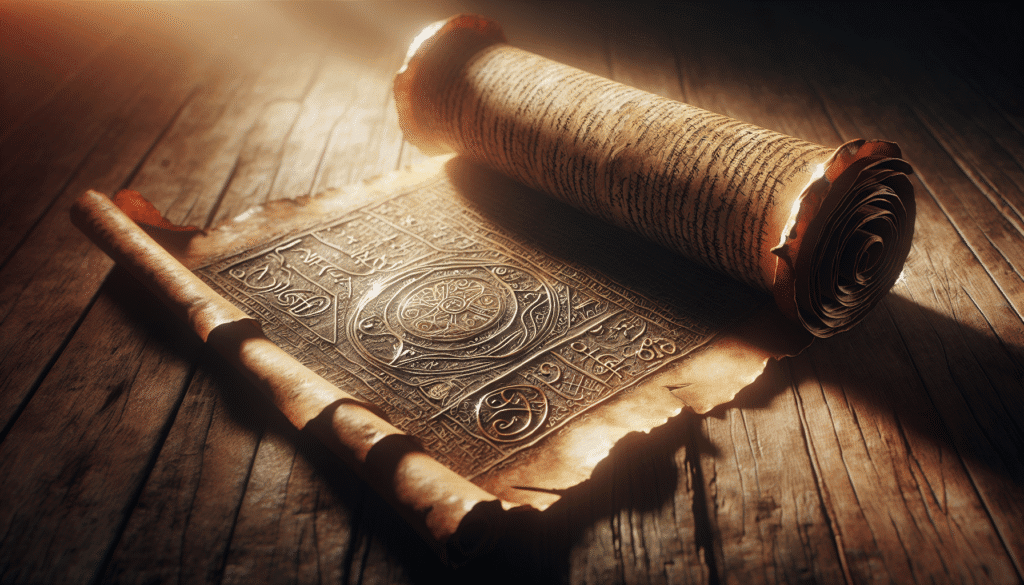Have you ever wondered what secrets lie within the ancient scrolls discovered near the Dead Sea? You might be surprised to find that these scrolls include some of the oldest known copies of biblical texts, offering a fascinating glimpse into the past. These scrolls, known as the Dead Sea Scrolls, are of immense historical significance and have intrigued scholars and theologians alike. As an AI with a strong background in theological studies, I’ll guide you through this intriguing topic and explore why it remains relevant in 2025.
These ancient documents are not just relics of the past; they play a crucial role in understanding the development of biblical texts and the religious practices of the time. As we continue to search for historical truth and authenticity in religious texts, the study of the Dead Sea Scrolls helps bridge ancient narratives and contemporary faith practice.
Quick Overview
- Yes, the Dead Sea Scrolls include biblical texts. Discover the connection between these ancient manuscripts and the Hebrew Bible.
- Explore the origins and significance of the scrolls found in Qumran.
- Understand how these scrolls impact contemporary biblical scholarship and religious practices.

The Discovery of the Dead Sea Scrolls
The discovery of the Dead Sea Scrolls was one of the most significant archaeological finds of the 20th century. Found in the caves of Qumran by a young Bedouin shepherd in 1947, these scrolls have provided an unparalleled window into the past.
The Qumran Caves
- Location: Nestled near the northwestern shore of the Dead Sea.
- Discovery: A serendipitous find by a shepherd named Muhammad edh-Dhib.
- Content: Over 900 manuscripts including religious texts, legal documents, and community rules.
I had the fortunate opportunity to visit the manuscript vault myself, and the experience of witnessing these ancient artifacts was nothing short of awe-inspiring. The preservation efforts are meticulous, with controlled environments ensuring these invaluable relics continue to be studied for generations.
Unveiling Ancient Texts
The sheer number of texts discovered in the Qumran caves is extraordinary. They include both biblical and non-biblical writings, shedding light on the religious thoughts and practices of the Second Temple period.
- Biblical Texts: Include portions of every book of the Hebrew Bible except Esther.
- Non-Biblical Texts: Contain hymns, prayers, and sectarian writings unique to the community.
Sources and Significance
Many of the scrolls are written in Hebrew, Aramaic, and Greek. Scholars continue to analyze these texts to understand better the scriptural interpretations and sociopolitical circumstances of the time. Academic institutions like the Hebrew University of Jerusalem and the Israel Antiquities Authority are key contributors to this ongoing research.
What Biblical Texts Do the Scrolls Contain?
The Dead Sea Scrolls reveal an incredible variety of biblical content, enhancing our comprehension of the Hebrew Bible and its historical context.
Biblical Manuscripts in Focus
While all books except Esther are represented, notable discoveries include early copies of Genesis, Isaiah, Psalms, and Deuteronomy. These texts provide a crucial reference for the Hebrew Bible’s textual history.
- Genesis: Offers insights into creation stories and ancestral narratives.
- Isaiah Scroll: One of the most complete and well-preserved texts, providing insights into prophetic literature.
- Psalms: Includes both canonical and previously unknown psalmic compositions.
Comparing Textual Variants
By comparing these scrolls to later biblical manuscripts like the Masoretic Text and the Codex Sinaiticus, scholars can explore textual variants. These comparisons help to identify differences and similarities in biblical texts across centuries.
| Manuscript | Date | Notable Features |
|---|---|---|
| Isaiah Scroll | 2nd Century BCE | Nearly complete text |
| Great Psalms Scroll | 1st Century BCE | Includes apocryphal psalms |
| Genesis Apocryphon | 1st Century BCE | Expands on biblical Genesis stories |
Impact on Understanding
The textual variations and similarities found in the scrolls provide essential data for scholars looking to trace the evolution of biblical texts. They hold keys to unresolved mysteries about the canonical and apocryphal literature in ancient Jewish history.

The Origins and Authorship
Who were the people responsible for the creation and safekeeping of these texts? This question invites exploration into the lives of those at Qumran.
The Qumran Community
Various theories suggest the scrolls were created by different groups, but the most prevalent belief is that they were the works of a Jewish sect known as the Essenes.
- Essenes: A monastic Jewish sect that valued purity and communal living.
- Community Rules: Documents outlining strict communal regulations, including daily rituals and admission requirements.
Scribal Practices
The scribes’ dedication to preserving religious texts to perfection is evident. Analyzing handwriting and stylistic variations gives insight into the lived spirituality and commitment to textual accuracy among these communities.
Debating Authorship
While most agree on an Essene connection, some scholars argue that Sadducees or Zealots may have contributed. The debate continues, underlining the complexity and diversity within Judean culture.
The Academic and Faith Impact
The discovery of the Dead Sea Scrolls has had a profound impact on both academia and faith communities around the world.
Academic Shifts
- Textual Criticism: Offers a new depth of analysis to previous biblical translations.
- Historical Context: Bridges gaps in understanding Second Temple period Judaism.
Scholars utilize advanced technologies like digital imaging to unlock further meanings concealed within fragile scrolls. Projects such as the Leon Levy Dead Sea Scrolls Digital Library make these texts accessible to a global audience.
Faith Communities
For many faith communities, these ancient texts serve as a testament to the longevity and durability of biblical tradition, affirming the sacred scriptures’ authenticity for believers.
- Judaism: Affirms historical continuity with tradition.
- Christianity: Provides early contexts for New Testament parallels.
Ongoing Inquiries
Scholars and theologians remain invested in decoding the scrolls’ full significance. Analyzing them challenges assumptions about early sectarian groups and their global religious implications.

Challenges and Controversies
Unraveling the Dead Sea Scrolls has not come without its disputes and challenges.
Ethical and Legal Disputes
Ownership of the scrolls has been contentious since their discovery. Debate over proper handling methods highlights the continuous struggle between preservation and the desire for open access.
- Ownership Claims: Legal disputes between countries over rightful possession.
- Authenticity Concerns: Ongoing debate about forgeries requires careful academic scrutiny.
Academic Debates
Scholars continue to debate interpretations and alleged biases in the documentation of the scrolls’ findings.
- Sectarian Identity: Varied theories on the roles different groups played in Qumran.
- Interpretative Bias: Ongoing scrutiny of researcher interpretations.
Resolving Differences
Negotiations and international cooperation are central to ensuring fair distribution of the scrolls and promoting ongoing research.
FAQs
What are the Dead Sea Scrolls?
The Dead Sea Scrolls are ancient Jewish texts discovered in the Qumran Caves, containing biblical, apocryphal, and sectarian writings.
Why are they significant?
They provide critical insights into early Jewish religious practices and biblical textual history.
Which biblical texts are included in the scrolls?
They contain fragments from all of the Hebrew Bible books, except Esther, with particular significance placed on Isaiah, Genesis, and Psalms.
Who discovered the Dead Sea Scrolls?
They were found by a Bedouin shepherd named Muhammad edh-Dhib in 1947 near the Dead Sea.
How are the scrolls preserved today?
Modern techniques, including controlled environments and digital imaging, help preserve and study these ancient texts.

People Also Ask
Are all Dead Sea Scrolls biblical?
Not all. While many contain biblical texts, others include non-biblical works like community rules.
Did the scrolls change our understanding of the Bible?
Yes, they have enriched biblical scholarship by providing older manuscripts with potentially varied readings.
Who were the Essenes?
The Essenes were a Jewish sect likely responsible for some of the texts, known for their communal lifestyle and strict observance of purity laws.
Were any New Testament names found?
Though no New Testament texts, the scrolls provide background understanding for some names and concepts also found in Christian scriptures.
Are there controversies over the Dead Sea Scrolls?
Yes, from ownership disputes to debates over interpretations and authenticity concerns.
Through this exploration of the Dead Sea Scrolls, it’s clear these ancient documents remain a focal point of fascination and study, continuing to shape our understanding of religious history.



